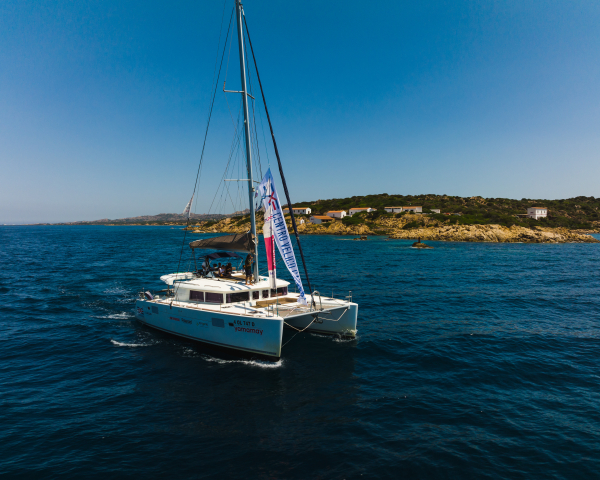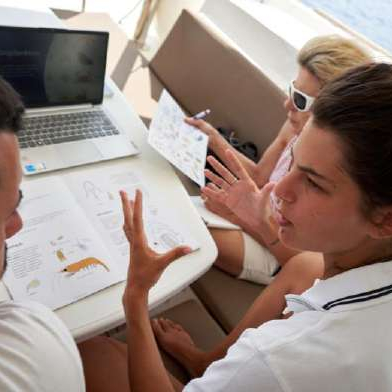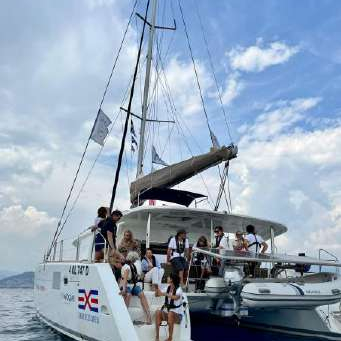Overview
ABOUT
12 weeks of sailing in the Tyrrhenian Sea, aboard the O.N.E. catamaran.
GOAL
Monitoring pollution from chemicals and marine biodiversity.
Results
Collecting data to help improve activities aimed at reducing impacts.
The 2022 Highlights
Our Journey
On April 29, 2022, the catamaran ONE sailed from the island of La Maddalena, marking the beginning of the M.A.R.E. Project (Marine Adventure for Research and Education). Monitoring the Mediterranean Sea through data collection (eDNA sampling and biodiversity analysis), promoting knowledge and protection of the marine environment were the set objectives achieved during the 12 weeks of navigation in the Tyrrhenian Sea, from Sardinia to Liguria.
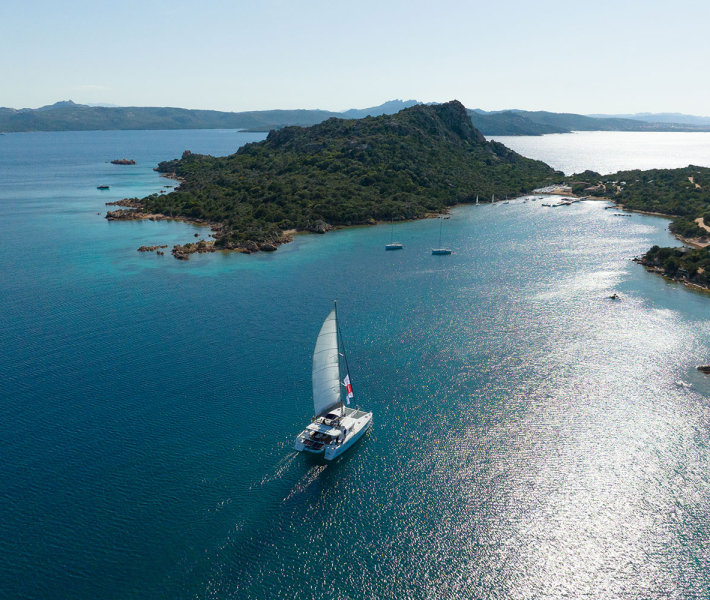
From Tyrrhenian...
1. 30/04 - 07/05: La Maddalena - Porto Palma
2. 07/05 - 14/05: Porto Palma - Alghero
3. 14/05 - 21/05: Alghero - Cagliari
4. 21/05 - 28/05: Cagliari - Palermo
5. 28/05 - 04/06: Palermo - Catania
6. 04/06 - 11/06: Catania - Marina di Camerota
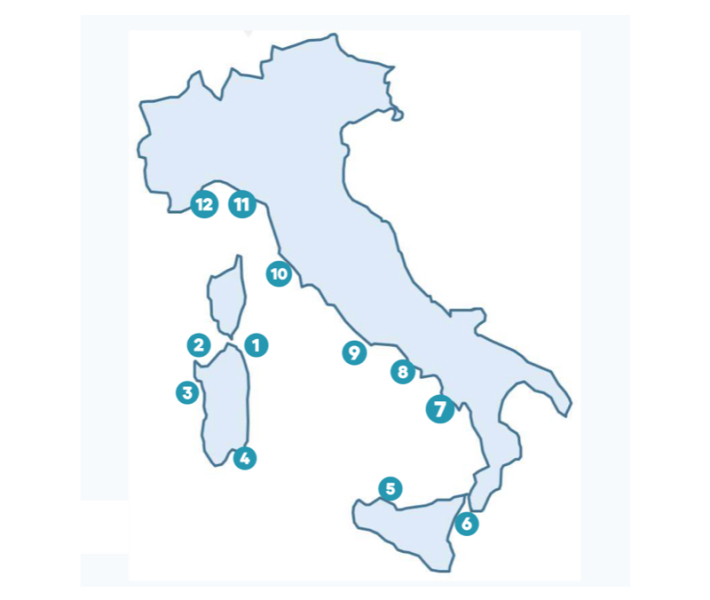
... to Ligurian Sea
7. 11/06 - 18/06: Marina di Camerota - Marina di Arechi
8. 18/06 - 25/06: Marina di Arechi - Gaeta
9. 25/06 - 02/07: Gaeta - Marina di Scarlino
10. 02/07 - 09/07: Marina di Scarlino - Marina di Fezzano
11. 09/07 - 16/07: Marina di Fezzano- Portofino
12. 16/07 - 23/07: Portofino - Porto Palma
2022 Goals
Biodiversity monitoring
Molecular analysis of environmental DNA has been conducted for the monitoring of marine biodiversity in the Tyrrhenian Sea
The objective of this analysis was to sample the DNA of rare species, data-deficient, and endangered species. Thanks to molecular analysis, which involved sampling 12 liters of water filtered through specific filters that capture the eDNA, it was possible to monitor various marine species.
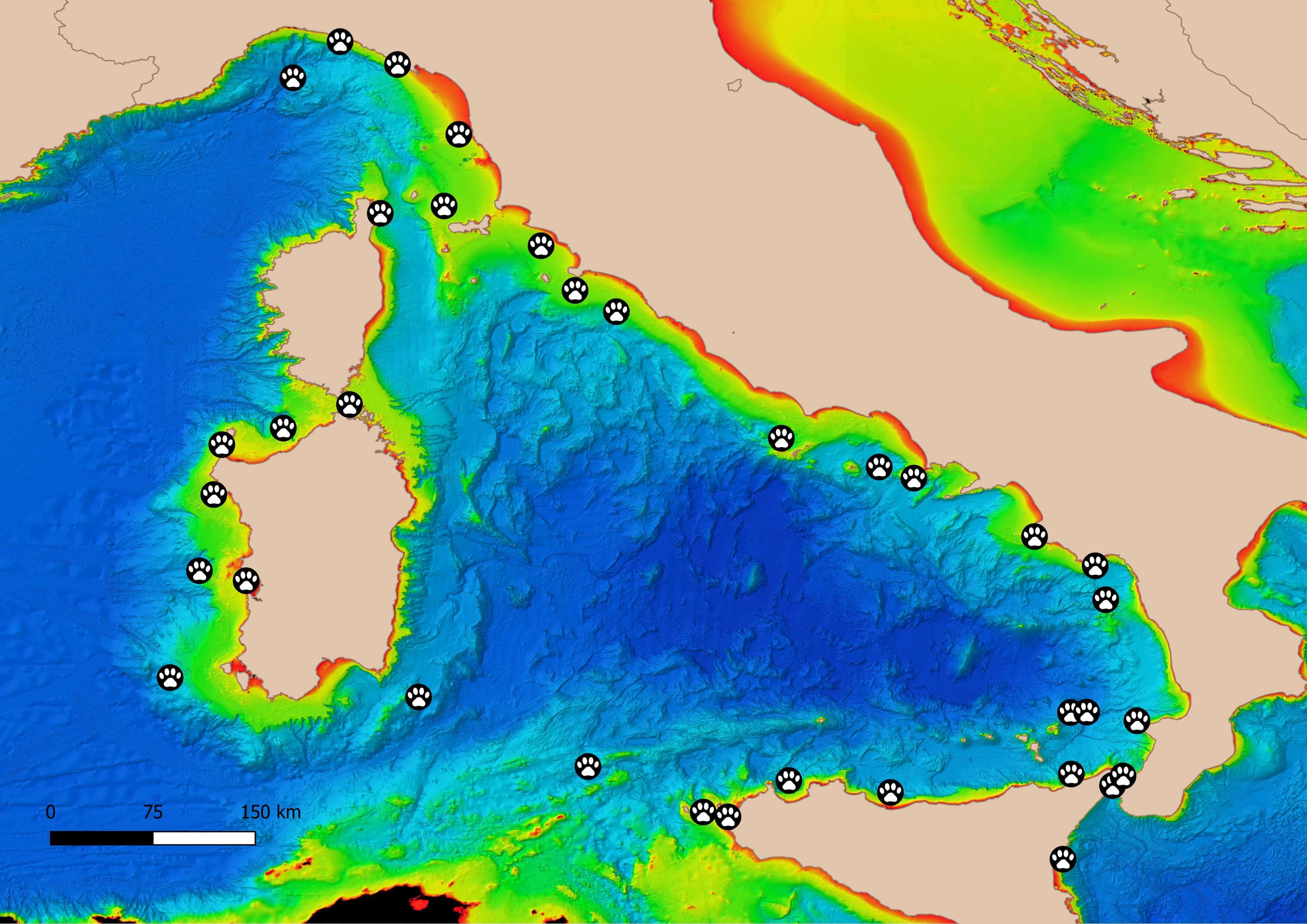
For the first time, new genetic markers were developed for 10 species. This will eliminate the process of method creation and validation for the scientific community, making monitoring faster and simpler.
Furthermore, positive results were found for many of the target species:
- Striped dolphin (52.7%)
- Common dolphin (2 samples)
- Bottlenose dolphin (38.8%)
- Fin whale (27.7%)
- Loggerhead turtle (4 samples)
- Basking shark (3 samples)
- Monkfish (3 samples)
- Blue crab (2 samples).
Evidence: Environmental DNA proves to be a reliable and non-invasive method for monitoring species that are difficult to detect using traditional visual monitoring methods.
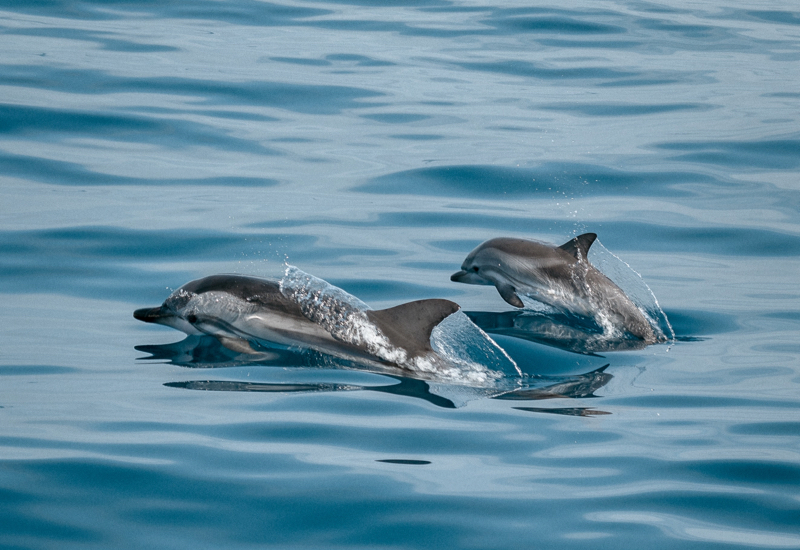
Ecotoxicological measurement
Through the sampling of zooplankton, an assessment of the presence and levels of different persistent contaminants was conducted.
54 zooplankton samplings were conducted to assess the presence of pollutants. The samples, subsequently frozen and preserved until their arrival in the laboratory, were processed to extract the data.
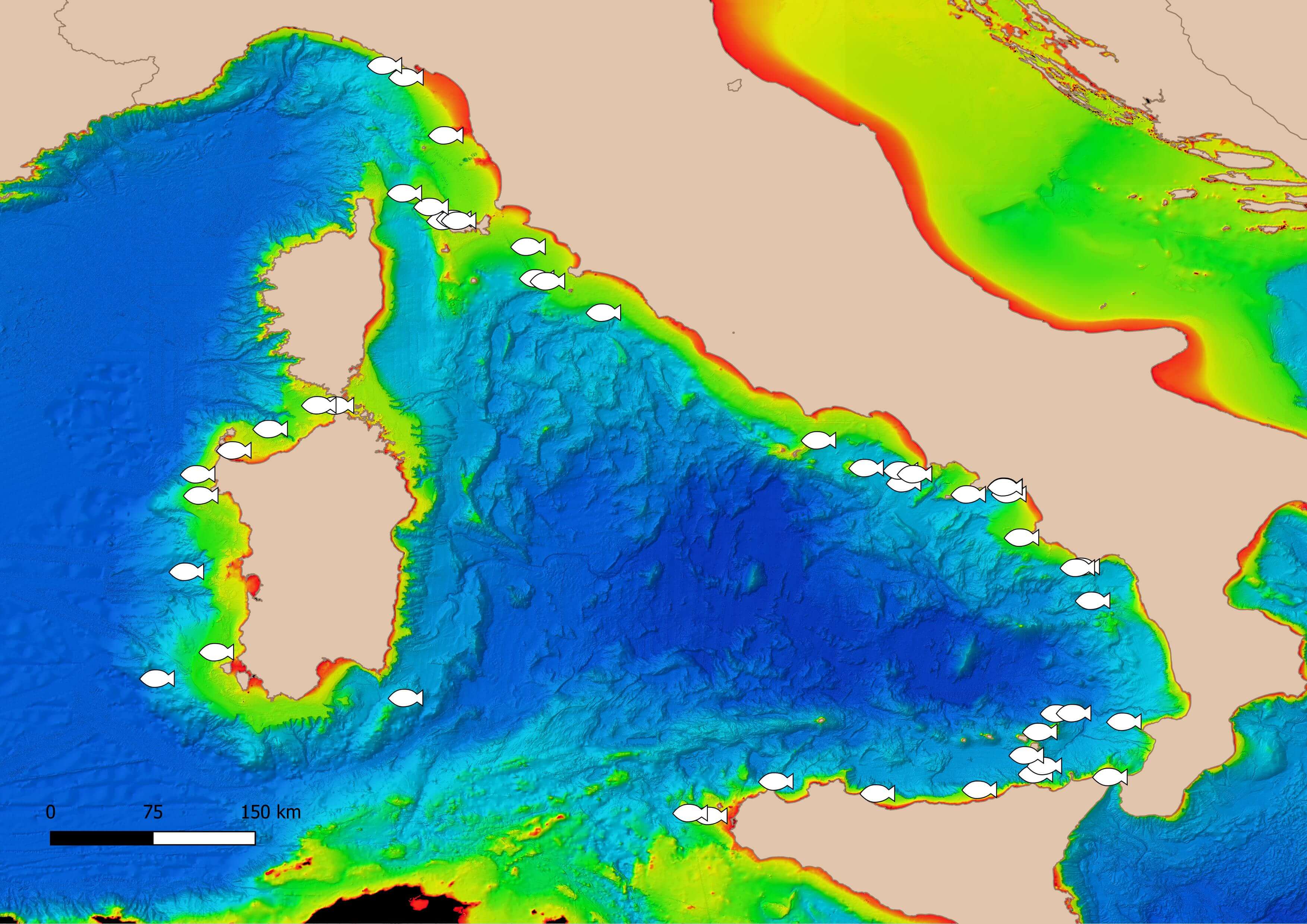
The pollutant levels found in the zooplankton samples exhibited significant variability, including two persistent organic pollutants, PCB and DDT.
By comparing the values with previous ecotoxicological studies (from the 1970s to the present), our data suggest a possible temporal decrease. This result is consistent with the bans on the use of these compounds.
Evidence: The collected data indicate a positive trend of pollutants in the Mediterranean basin, although there is not enough data for a direct comparison. Therefore, our project plays a crucial role in providing new baseline data for future comparisons.
